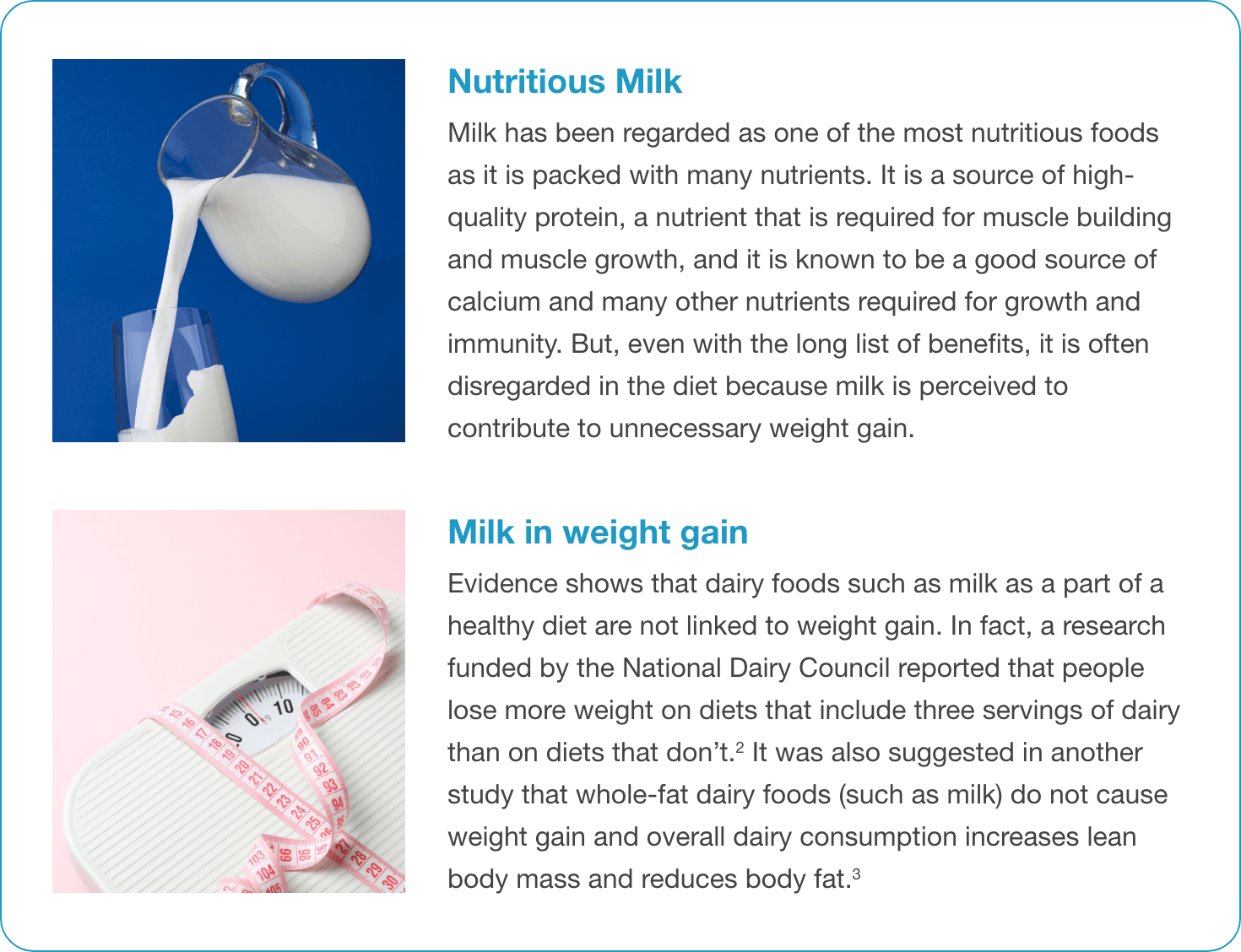The Challenge: Filipinos are not drinking enough milk
A food consumption survey carried out by the Food and Nutrition Research Institute in 20191 revealed that 96.1% of Filipino adults have an inadequate dietary intake of calcium. Moreover, the same survey reports that milk is one of the top food sources of calcium for Filipino adults together with rice, chicken meat, sardines, and freshwater snail. It is now clear to see that much of the inadequate dietary intake can be attributed to the lack of presence of milk in a typical Filipino diet.
With the challenge at hand, explore the wonders of milk and how it can be incorporated into a diet. So, what is milk and what does it do?

Drink milk to help manage your weight
As opposed to the bad perception of milk on weight, it can help an individual manage weight! Milk is an excellent source of calcium, and it is calcium that influences weight.
Listed below are further discoveries by accumulating bodies of recent evidence suggesting that calcium can help in weight management and even more:

Why milk, not supplements?
Supplements may be a convenient source of nutrients, but in this case, it is better to obtain calcium from dairy sources such as milk. Studies have shown that dairy sources of calcium such as milk exert significantly greater anti-obesity effects than supplemental calcium carbonate, possibly due to the effects of other bioactive compounds in milk.2 Bioactive compounds found in milk provide health benefits beyond basic nutritional values, as these come from milk proteins, lipids, and carbohydrates, such as bioactive peptides, α-lactalbumin (α-La), immunoglobulins, lactoferrin (LF), growth factors, glycomacropeptide (GMP), milk fat globule membrane (MFGM), and milk oligosaccharides (OSs).6 Apparently, supplements don’t have all of these.
Milk (and dairy products) can be crucial in diversifying the diet. They are nutrient-dense and provide high-quality protein and micronutrients in an easily absorbed form that can benefit both nutritionally vulnerable people and healthy people when consumed in appropriate amounts.7
Clearly, milk should not be missed. The challenge now is, how can milk be incorporated into the diet?
Practical tips to add more milk into the diet:

Try recipes with milk. Add milk to soups, pastas, and other viands. Not only does it add nutrients, but it also makes it tastier!

If plain milk is not appetizing – explore different flavors of milk (fortified, choco, or fruits like strawberry, green apple, or mango) in the market to find which suits the taste.

Turn milk into a dessert. Nobody can resist a creamy panna cotta or a refreshing melon chill with jelly or a creamy choco scramble – some examples of desserts that can be made with milk.
Conclusion
The limited supply of milk in the diet of Filipino adults contributes to the inadequacy of many nutrients, specifically calcium, in the diet. Notably, calcium sourced from dairy products such as milk can help manage weight when consumed in appropriate amounts. Remember that milk is just a part of a proper diet, it may be nutritious as it is but if consumed excessively may lead to an increased risk of mortality.8
Message to RNDs
As registered nutritionist-dietitians, we know good nutrition more than anybody else. With this knowledge, we have the power to influence the public to lead healthier lives. Be active in the dissemination of relatable nutrition information that is backed by science, for we have the credentials, as registered nutritionist-dietitians, to carry on this crucial task.
Pro Tip
As a part of a healthy and balanced diet, calcium-rich milk may help with weight management.


 Veron Catrisse D. Delos Reyes , RND
Veron Catrisse D. Delos Reyes , RND















No comments here yet.